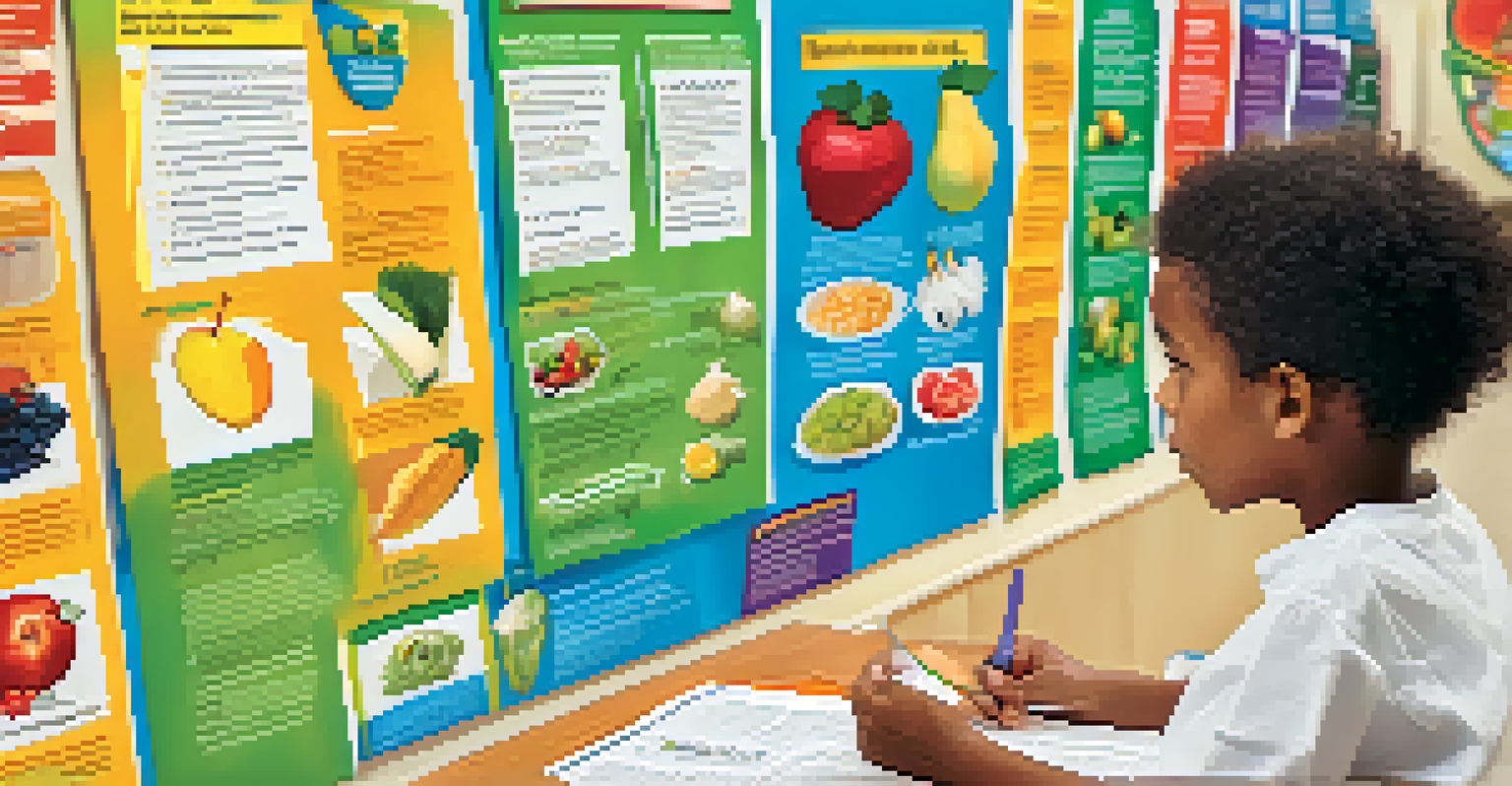Food Education Programs: Building Awareness for Food Security

Understanding Food Security: A Global Concern
Food security refers to the state where all individuals have consistent access to enough nutritious food to lead a healthy life. It's a critical issue affecting millions worldwide, often linked to poverty, natural disasters, and conflicts. When people lack food security, it not only impacts their health but also stunts economic growth and social development.
Food security is not just about having enough to eat; it’s about having the right kind of food to eat.
In many communities, food insecurity can lead to chronic health issues, including obesity and malnutrition. This paradox exists because limited access to fresh, healthy food often results in reliance on cheaper, processed options. By understanding the roots of food insecurity, we can better address its challenges through comprehensive educational programs.
Food education programs aim to raise awareness about these issues, equipping individuals with knowledge about food sources, nutrition, and sustainable practices. By fostering this awareness, we can empower communities to take action towards achieving food security for all.
The Role of Food Education Programs
Food education programs play a vital role in raising awareness about food security and nutrition. They provide individuals and families with essential knowledge about food choices, cooking skills, and the importance of a balanced diet. Through workshops, community events, and school curricula, these programs aim to make healthy eating accessible and achievable.

By learning about food sourcing and preparation, participants can become more self-sufficient. For example, community gardens not only provide fresh produce but also teach valuable skills in gardening and cooking. As people engage more with their food, they develop a deeper appreciation for nutrition and its impact on their health and well-being.
Food Security Affects Millions
Food security is a pressing global issue, impacting health and economic growth due to factors like poverty and conflict.
Moreover, food education programs can bridge cultural gaps by incorporating diverse culinary traditions. This not only enriches participants' experiences but also fosters a sense of community and shared learning. In this way, education becomes a powerful tool in addressing food insecurity.
Benefits of Community Engagement in Food Programs
Community engagement is at the heart of successful food education programs. When local residents actively participate, they help shape the program to meet their specific needs and preferences. This participatory approach fosters a sense of ownership and responsibility, which can lead to sustainable changes in food habits.
Education is the most powerful weapon which you can use to change the world.
By collaborating with local organizations, schools, and businesses, food education programs can amplify their impact. For instance, partnering with farmers' markets can provide fresh produce while also supporting local agriculture. Such partnerships create a network of resources that benefit everyone involved.
Additionally, engaging the community helps to disseminate information more effectively. Word-of-mouth and shared experiences often resonate more than traditional marketing. As stories of success circulate, more individuals may be encouraged to participate, creating a ripple effect of awareness and action.
Incorporating Technology in Food Education
In today's digital age, technology can significantly enhance food education programs. Online platforms and mobile apps can provide resources for meal planning, nutrition tracking, and cooking tutorials. This accessibility allows individuals to learn at their own pace and tailor their learning experience to their lifestyles.
Virtual workshops and webinars have also gained popularity, especially following the COVID-19 pandemic. These formats expand the reach of food education, allowing participants from various locations to join in. This inclusivity ensures that more people can access valuable knowledge and skills that promote food security.
Education Empowers Communities
Food education programs equip individuals with knowledge about nutrition and sustainable practices, fostering healthier communities.
Moreover, using social media as a tool for education allows programs to engage younger audiences effectively. Creative content, such as videos and infographics, can break down complex topics into digestible information. By meeting people where they are, food education programs can inspire action and foster a culture of health.
The Importance of Nutrition Education
Nutrition education is a cornerstone of food education programs, as it teaches participants the importance of a balanced diet. Understanding the nutritional value of foods helps individuals make informed choices that positively affect their health. For instance, learning about portion sizes and food groups can empower people to create more nutritious meals.
Additionally, nutrition education addresses prevalent misconceptions about food, such as the idea that healthy eating is too expensive. By providing practical tips on budgeting and meal planning, programs can show participants that healthy foods can fit into their budgets. This knowledge is crucial for low-income families who often face food insecurity.
Furthermore, equipping individuals with the skills to read food labels and understand ingredients can boost their confidence in making healthier choices. When people feel informed and empowered, they are more likely to prioritize their health and share their knowledge with others, creating a community of informed eaters.
Addressing Cultural Sensitivity in Food Education
Cultural sensitivity is essential in food education programs, as food practices often vary across different communities. Recognizing and respecting these differences fosters an inclusive environment where everyone feels valued. Programs that celebrate cultural diversity can create stronger connections among participants and enhance learning experiences.
For example, incorporating traditional recipes and cooking methods can make nutrition education more relatable and enjoyable. When individuals see their cultural foods represented, they are more likely to engage with the material. This approach not only promotes healthy eating but also preserves cultural heritage.
Cultural Sensitivity Matters
Incorporating cultural diversity in food education enhances engagement and creates a more inclusive learning environment.
Moreover, understanding cultural food practices can help educators tailor their approaches to better serve diverse populations. By actively listening to community needs and preferences, food education programs can create a more impactful and lasting influence on food security efforts.
Evaluating the Impact of Food Education Programs
To ensure the effectiveness of food education programs, regular evaluation is crucial. By assessing participant feedback, knowledge gained, and behavioral changes, organizations can determine what works and what needs improvement. This process allows for continuous refinement of the programs to better meet community needs.
Additionally, tracking long-term outcomes, such as increased access to healthy foods or improved health metrics, can demonstrate the program's impact on food security. For instance, communities that implement these programs may see a decrease in food insecurity rates over time. Such evidence can help secure funding and support for future initiatives.

Finally, sharing success stories and data with stakeholders can help raise awareness about the importance of food education. By showcasing tangible results, advocates can inspire more communities to invest in food education programs, ultimately contributing to a broader movement towards food security.